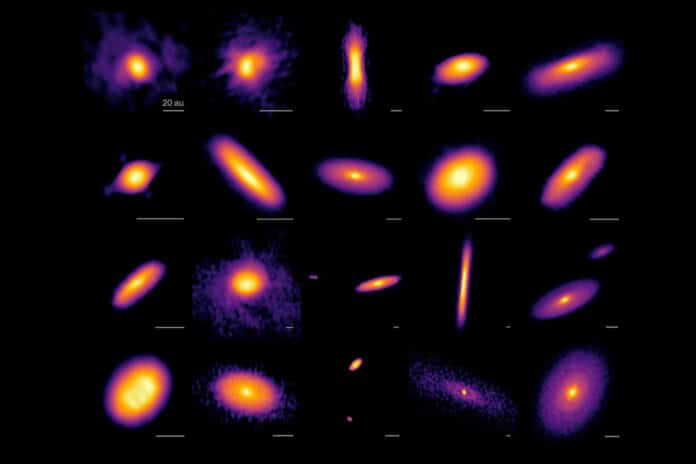Around a young star, planets form in a disk. A developing planetary system only has a few million years to complete its planetary system formation because these “proto-planetary” discs are short-lived. It is still unclear, though, how quickly planet formation starts inside these discs.
A multinational research team used the Atacama Large Millimeter/submillimeter Array (ALMA) to observe discs around 19 protostars with extremely high resolution to look for the earliest indications of planet formation. Since many proto-planetary discs feature substructures like gaps and rings, this proves that planets are already emerging from the disc, according to the observations.
The recent discoveries that planet formation may be actively occurring in more developed protoplanetary discs served as the impetus for this survey. There had been no systematic investigation to look for indications of planet formation in younger protostellar systems.
Nagayoshi Ohashi at Academia Sinica Institute of Astronomy and Astrophysics (ASIAA, Taiwan), who led the team, said, “These previous results motivated us to examine even younger disks around protostars to answer the question, at what stage of star formation do planet forms.”
The scientists looked at discs surrounding 19 protostars that were only 650 light-years from Earth. The intricate structure of discs revolving around a sizable sample of protostars with the great angular resolution is being examined in this work for the first time in a systematic manner.
The observations unequivocally demonstrate that protostar discs are distinct from more advanced protoplanetary discs. Only a few discs of the 19 protostars had rings and gaps, indicators of planet formation. Furthermore, the ring formations lack the clarity of those found in protoplanetary discs.
Ohashi said, “We did not expect to see such clear differences between disks around protostars and more-evolved disks.”
John Tobin, a Co-PI of the National Radio Astronomical Observatory (USA) program, adds, “Our results suggest that disks around protostars are not fully ready for planet formation. We believe that the actual formation of the planetary system progresses rapidly in the 100,000 years to 1,000,000 years after star formation begins.”
Journal Reference:
- Nagayoshi Ohashi, John Tobin et al. Early Planet Formation in Embedded Disks (eDisk). I. Overview of the Program and First Results. The Astrophysical Journal. DOI: 10.3847/1538-4357/acd384
